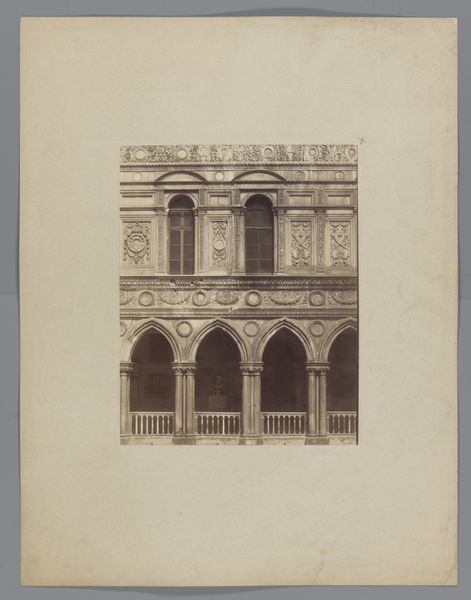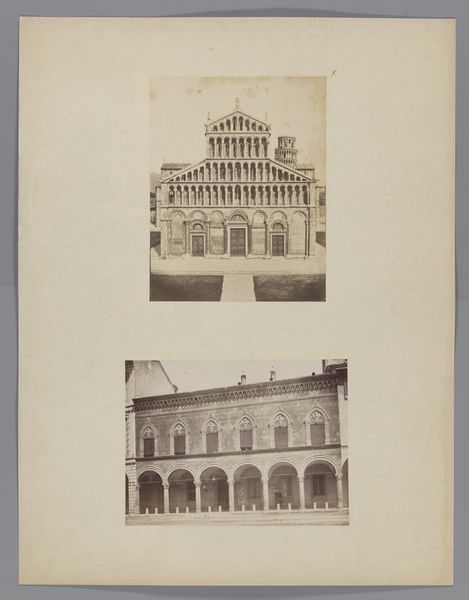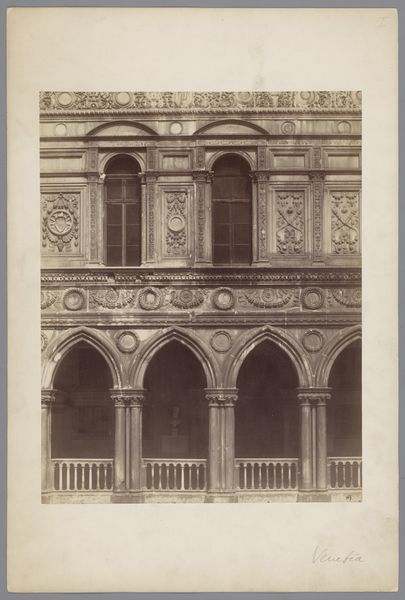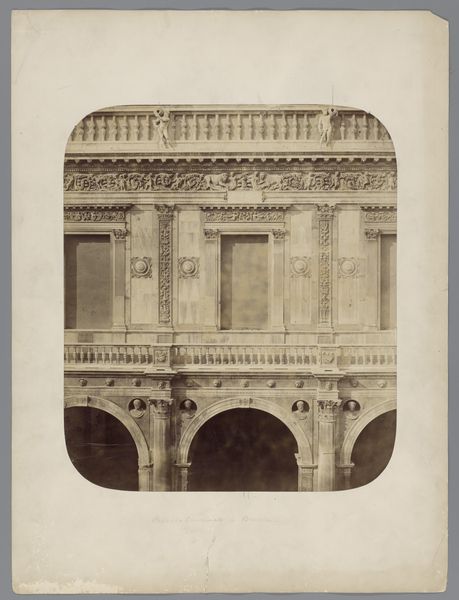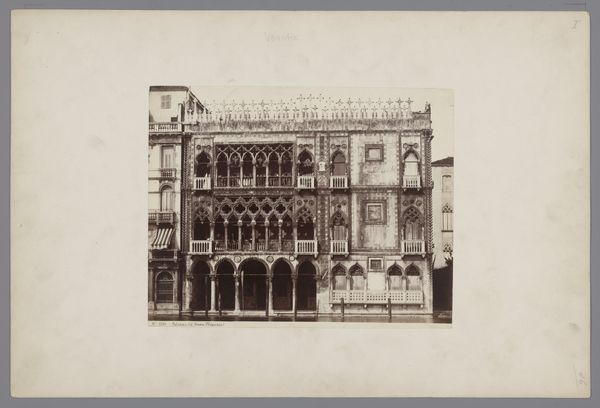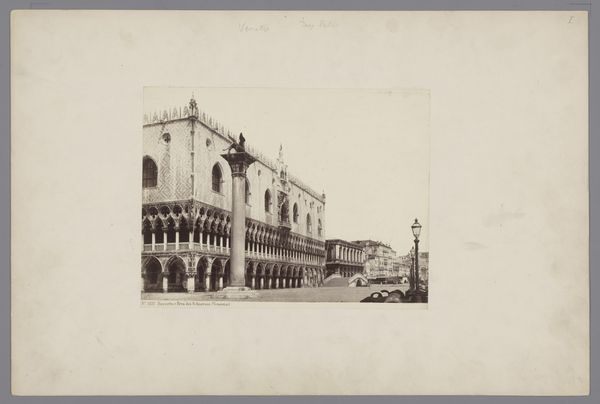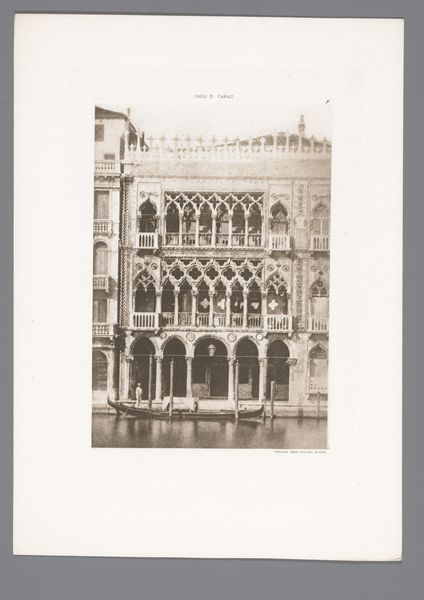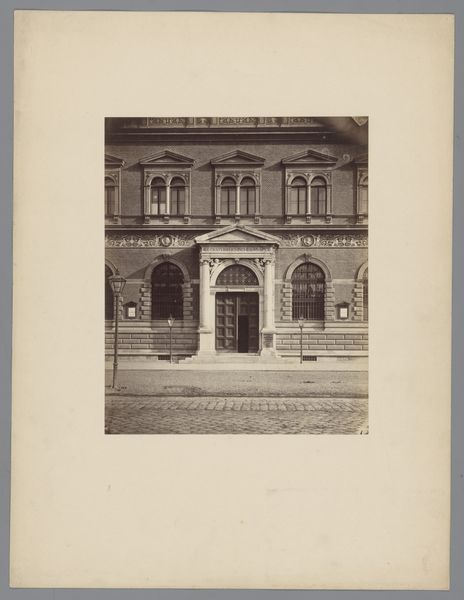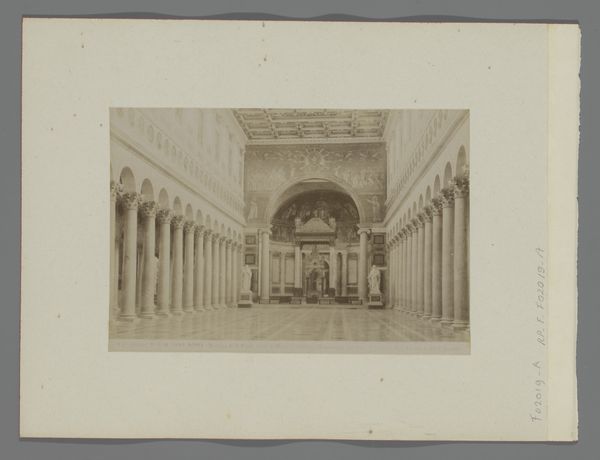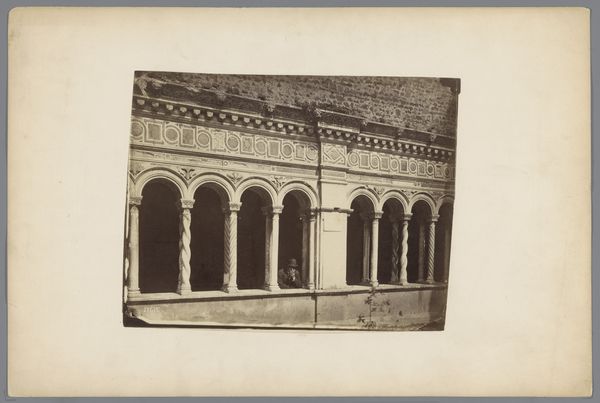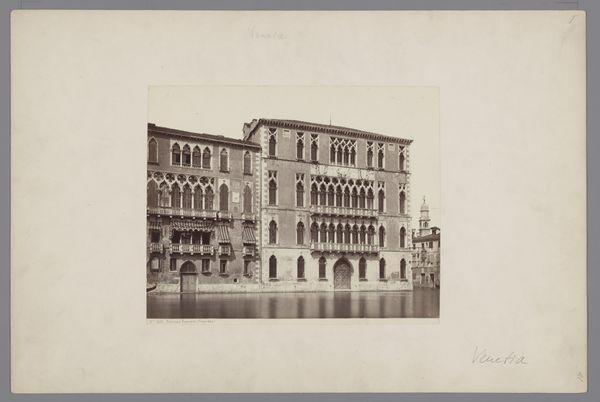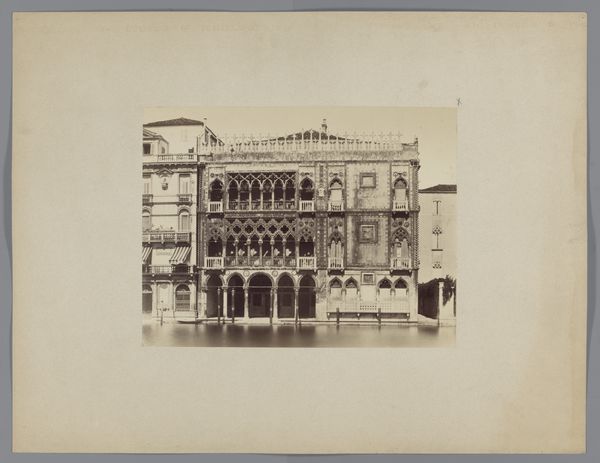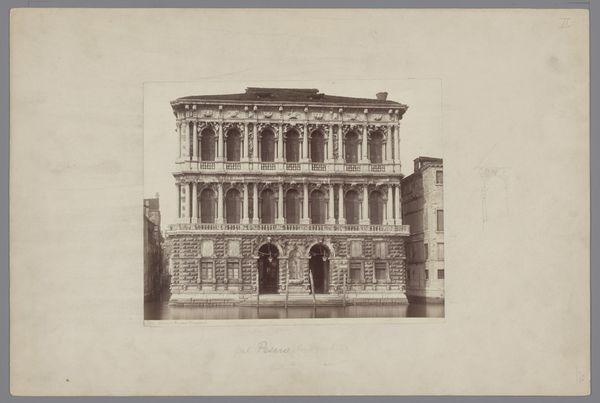
Dimensions: height 352 mm, width 270 mm, height 650 mm, width 270 mm
Copyright: Rijks Museum: Open Domain
Carlo Naya made this photograph of a palace in Venice sometime in the 19th century, by using a process that was still quite new at the time. Photography occupies a curious position relative to craft, as it relies heavily on mechanical and chemical processes, while also allowing for artistic expression. In this print, the surface texture isn't just a result of the scene Naya captured. It’s also a consequence of the way light-sensitive materials interact with each other. It is a work of chemistry and optics. What’s interesting here is how photography democratized the image. Think of the number of hours it would have taken a painter to render this scene, compared to the relative ease of producing this photographic print. Although there are plenty of aesthetic decisions in this image, the labour involved is of a different character to older forms of image-making. So, when considering this photograph, we can think about how it reflects shifts in labour, technology, and artistic expression that reshaped the 19th century.
Comments
No comments
Be the first to comment and join the conversation on the ultimate creative platform.
